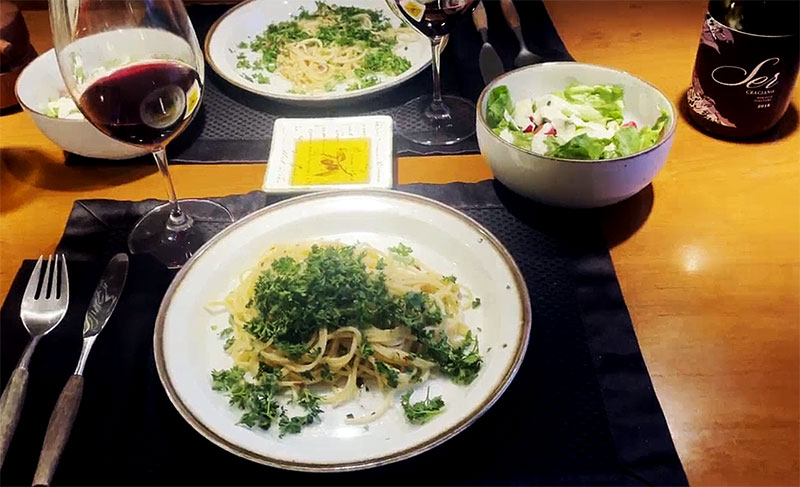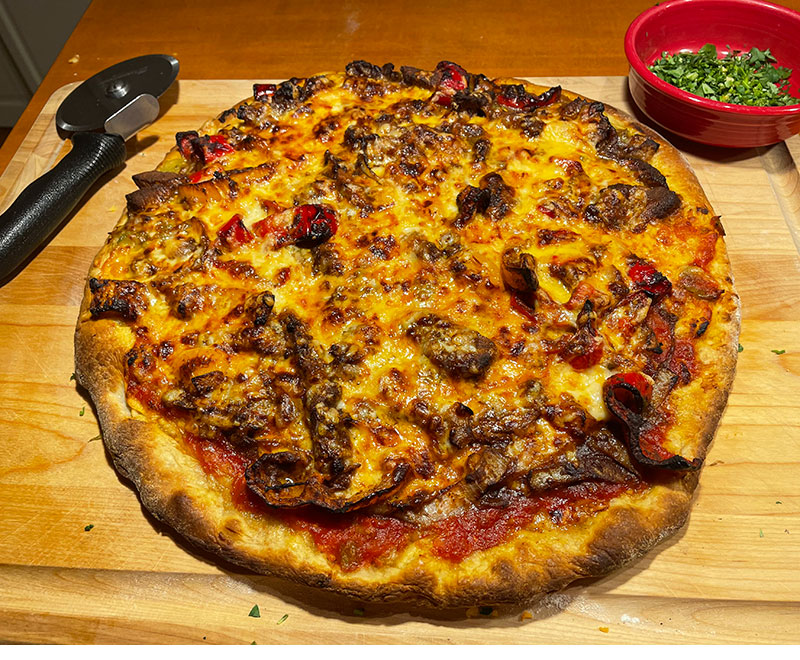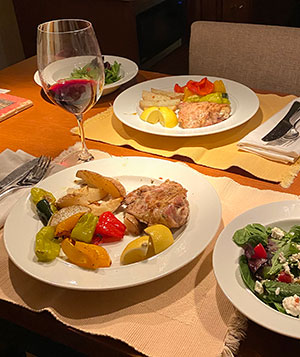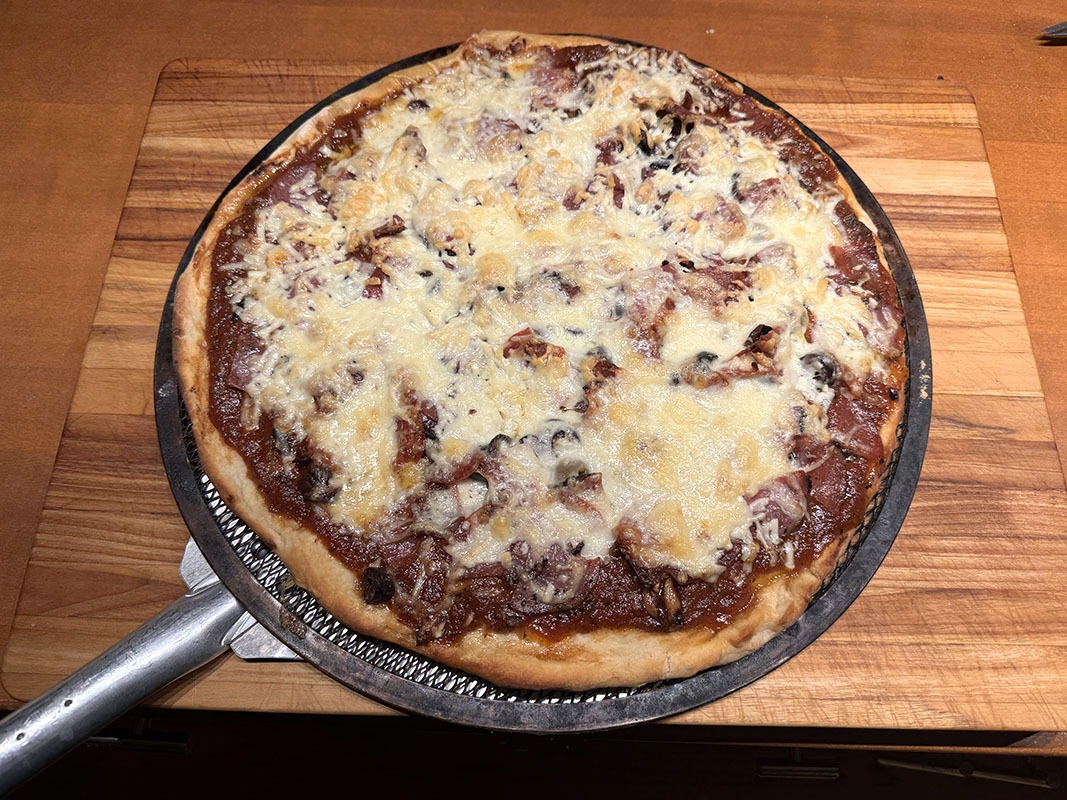
Salami Pizza
I had olives and sliced meats left over from a charcuterie board, so I came up with a pizza recipe to use them.
THE DOUGH
This is a Neapolitan-style crust, which is relatively thin and crisp.
Start dough at 3:30p for dinner between 7p and 8p
1 -1/2 cups warm water (105 to 115 degrees F.) [330 grams]
1 tsp instant-rise yeast
1 cup 00 pizza flour or cake flour [145 grams]
2-1/2 cups all purpose flour [360 grams]
2 tsp salt
Combine ingredients and knead by hand for 10 minutes or machine
for five minutes. Coat dough ball in a thin film of olive oil or cooking spray, cover in plastic wrap, and let rise in warm place until doubled in size, about two hours.
THE PIZZA
1 can of anchovies (or salt to taste)
4 oz. white mushrooms, sliced [110 grams]
3 to 4 cups tomato sauce
2 Tbls Italian seasoning
1 Tbl garlic powder
1 Tbl onion powder
1/4 cup fig preserves [optional]
2 Tbls olive oil
8 oz. thin-sliced salami (I had a mix of calabrese, pepper-coated dry salami, and Italian dry salami) [220 grams]
6 oz. kalamata and/or green olives, sliced [165 grams]
6 oz. fontina cheese, shredded [165 grams]
6 oz. Peccorino Romano cheese, shredded [165 grams]
Place anchovies with their oil in a medium saucepan. Saute the mushrooms until tender. Add tomato sauce, seasonings, and fig preserves if using. Simmer until thickened, about an hour.
An hour before dinner time, turn the oven up as high as it will go, preferably 500 degrees. Forty-five to sixty minutes before baking, roll dough out to 15” circle. [Or divide dough if you want to make two smaller pizzas.] Place on pizza screen if available, being careful not to press the dough into the mesh. With your fingers, press and form a 1/2 inch border around the edge. Gently brush or rub the dough with the olive oil. Cover with plastic wrap for a second rise.
When the dough is ready, spread the tomato sauce over the dough up to the raised border. Arrange the salami and olives evenly over the sauce. Cover with the shredded cheeses.
Bake the pizza on the bottom rack of the preheated oven for 10 minutes, or until the crust is golden brown and the cheese is melted and speckled.
I paired this pizza with this excellent Chianti Classico.
Mangia! Mangia!
Serves 4 to 6.
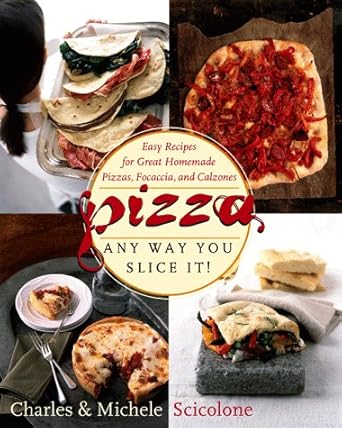 This recipe is based on one in Pizza, Any Way You Slice It by Charles and Michele Scicolone.
This recipe is based on one in Pizza, Any Way You Slice It by Charles and Michele Scicolone.


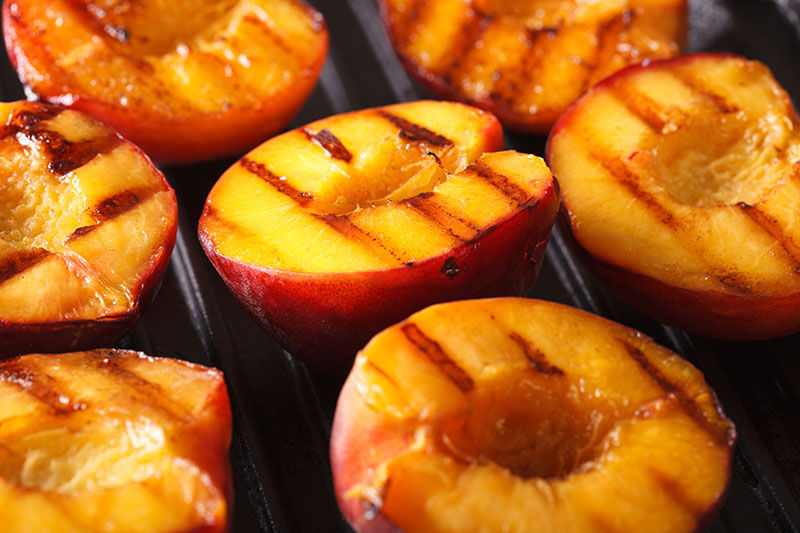
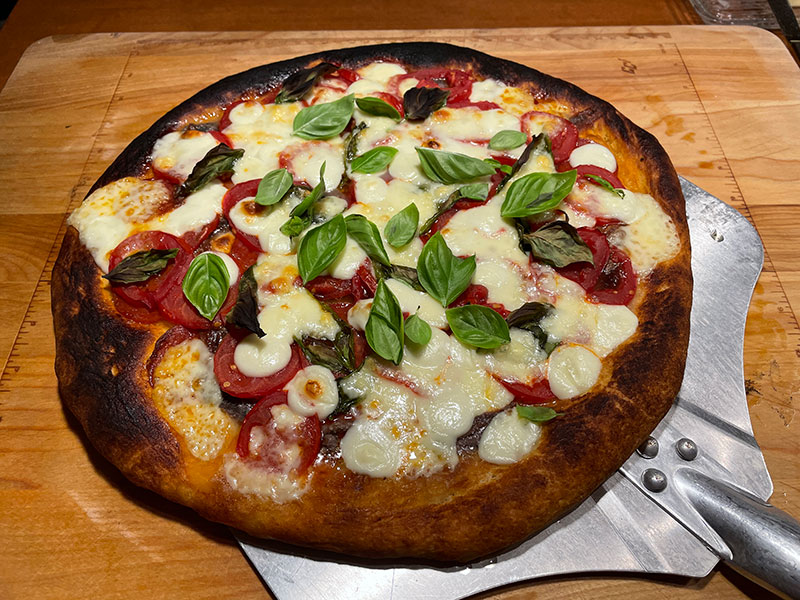
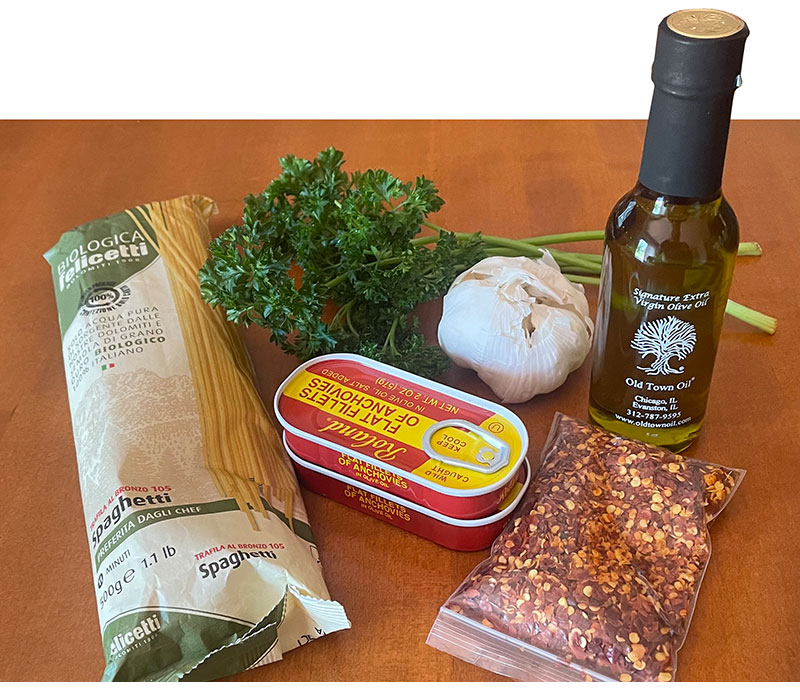 Spaghetti Aglio e Olio
Spaghetti Aglio e Olio